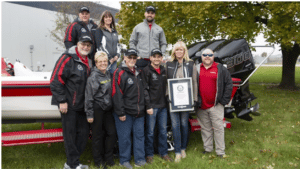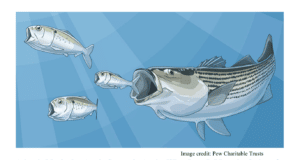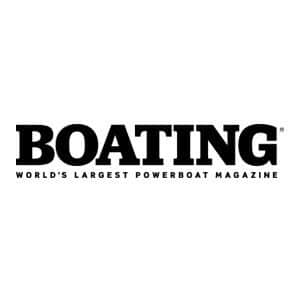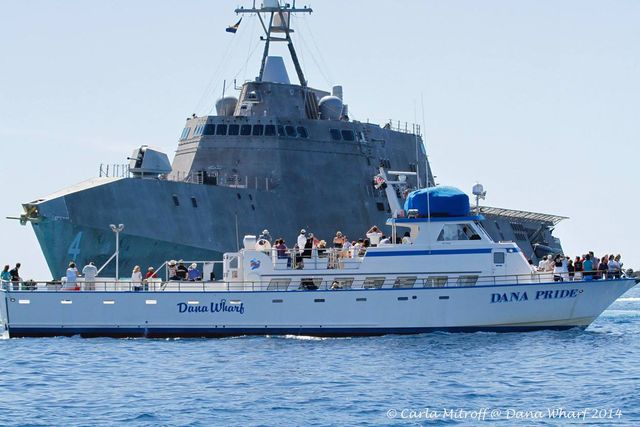
Whale Crossing
The Southern California coast witnessed a rare and remarkable sight this past weekend when a new, ultra-advanced, 419-foot U.S. Navy warship halted sea trials to make way for a migrating group of California gray whales.
Just seeing the USS Coronado (LCS-4) – one of the Navy’s new breed of stealthy, speedy trimaran warships – on maneuvers in local waters ranks as an impressive experience. That’s what passengers aboard the whale-watching boat Dana Pride were treated to while just a few miles off the coast of Dana Point. Yet the story gets even better, according to the Dana Wharf website.
The whale-watching passenger boat had found a group of migrating California gray whales and were observing from a safe distance when the captain, Todd Manzur, realized the nearby warship was on a collision course with the cetaceans. He hailed the Coronado on VHF to warn them off, and that’s when the warship came to a stop, allowing the whales to clear the area before resuming its sea trails.
You don’t think of fearsome warships as giving way to anything, but in this case, the captain of the Coronado deferred, offering unfettered passage to the gentle giants.
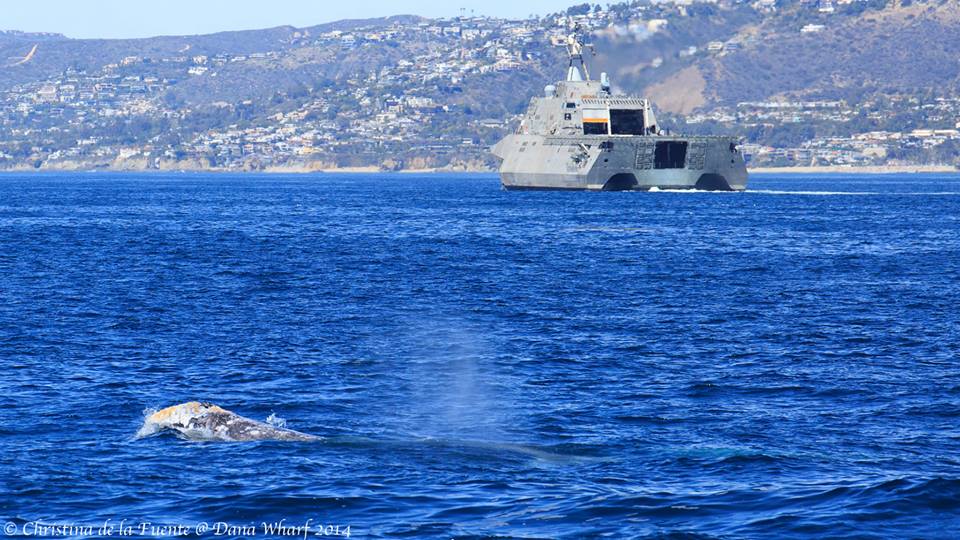
| |Photo by Christina de la Fuente/Dana Wharf|
California gray whales are currently migrating northward along the Pacific Coast on an annual 6,000-mile passage that takes them from the warm lagoons of Baja California where birthing occurs to the cold waters of the Arctic to feed. They return to Baja in autumn.
Built in Mobile, Alabama, the Coronado is the fourth of the Navy’s littoral combat ships and the second LCS of the aluminum, trimaran Independence variant. It is scheduled to be commissioned April 5, and will be homeported in San Diego, California.
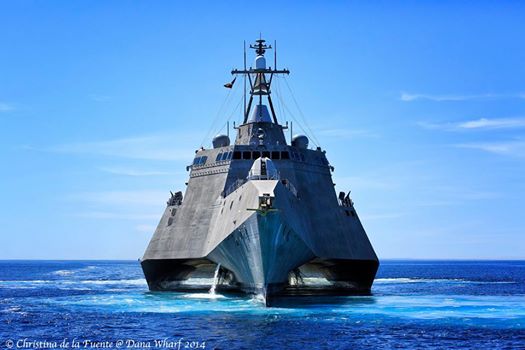
| |Photo by Christina de la Fuente/Dana Wharf|
The high-speed warship is designed to carry out missions close to the coast and is powered by thrusters instead of propellers. With a draft of just 14.4 feet, it can access relatively shallow water. The uniquely angled topsides help deflect radar and minimize its radar signature, offering it a stealthy edge. Its primary purpose is to defeat asymmetric “anti-access” threats such as mines, quiet diesel submarines and fast surface craft, according to the ship’s website.
For more on how to safely navigate in areas where whales are present, visit boatingmag.com/whale-encounter.

